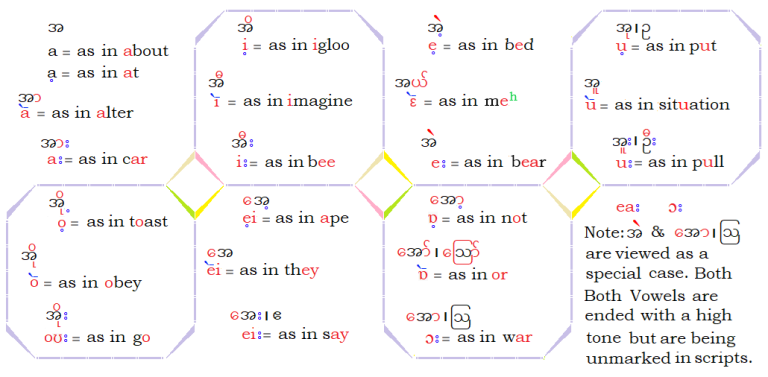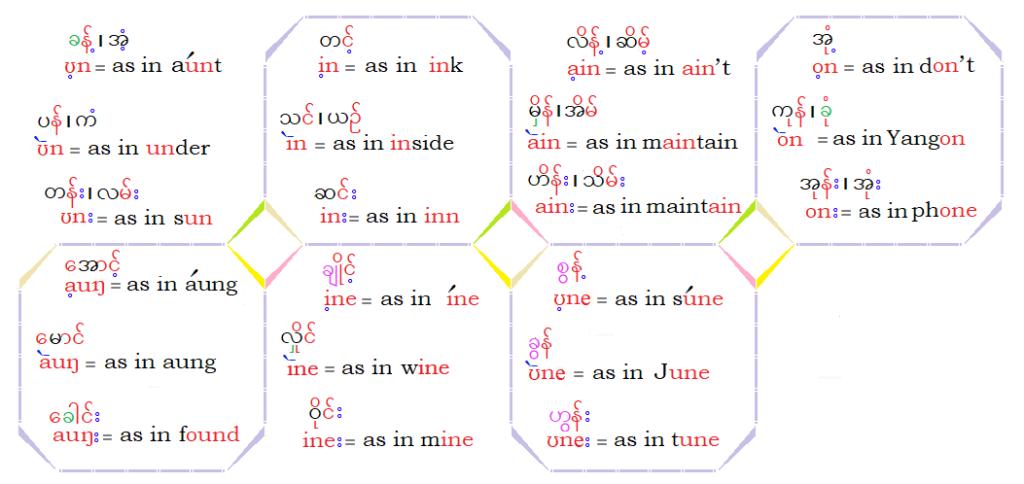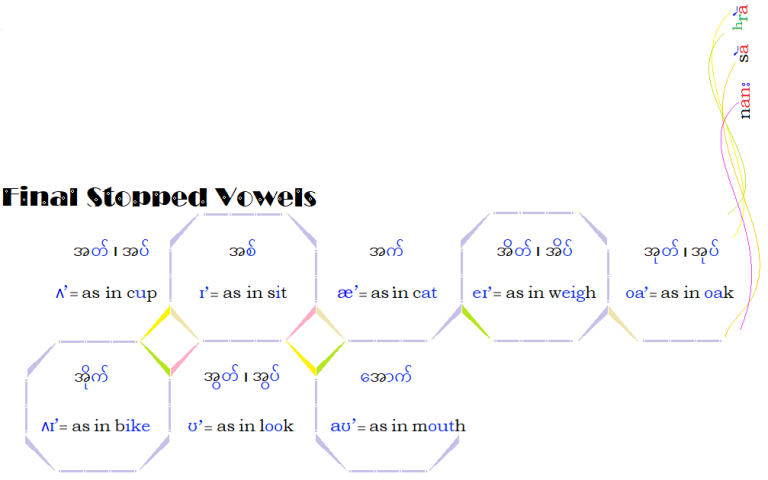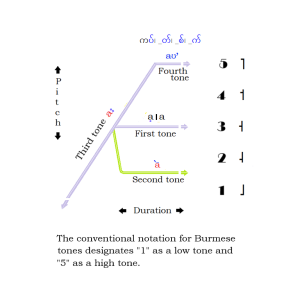Explore our teaching style
Enhance Your Burmese Phonetics!
Explore our Burmese Vowel page for a comprehensive guide to the diverse vowels in Burmese. This resource will help you understand their pronunciation, usage, and impact on word meanings.
Opening Vowels

Final Nasal Vowels
In Burmese, there are seven final nasal vowels that occur at the end of syllables and play a crucial role in the language’s phonetic system. and Mastery of Burmese Phonetics.

Final stop Vowels
A final stop vowel is a brief sound that ends with a high glottal stop. In Burmese linguistics, there are eight final stop vowels that appear at the end of syllables.
To master these vowels, one should:
Identify and practice them.
Enhance pronunciation skills through guided exercise.

Explanation of Burmese Tones
In Burmese linguistics, Tones play a crucial role in distinguishing the meaning of words. Here is a brief explanation of the four primary tones:

First Tone: A short tone with two variations. When marked, it should be read with emphasis. For example: gḁ ၊ က ၊ to dance.
Often, the first tone is unmarked and should be read smoothly without emphasis. For example: ga-sa: ၊ ကစား ၊ to play.
Second Tone: A low tone that is slightly longer than the first tone. When reading it, you should lower your chin. For example: bӑ ၊ ပါ ၊ polite particle.
Third Tone: A prolonged tone, characterized by its extended duration and a pitch that gradually descends from high to low. For example: la: ၊ လား ၊ question particle.
Fourth Tone: Slightly shorter than the first tone, this tone is marked by a brief sound that concludes with a high glottal stop, also known as a final stop vowel. For example: tʃaʊ’ ၊ ခြောက် ၊ number six.
Understanding these tones is essential for accurate pronunciation and comprehension in Burmese!